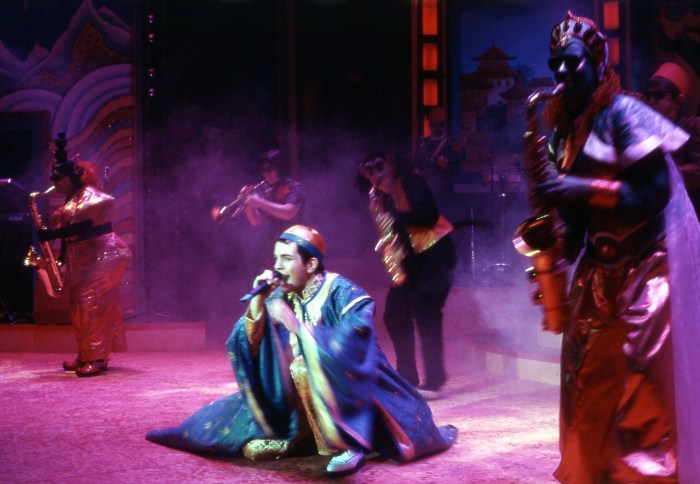 As we approach the pantomime season again and remember how much we love to hate the hackneyed stories, the corny old jokes and the clichéd incorporation of popular songs, we might also notice how important and pervasive pantomime’s influence has been on musical theatre.
As we approach the pantomime season again and remember how much we love to hate the hackneyed stories, the corny old jokes and the clichéd incorporation of popular songs, we might also notice how important and pervasive pantomime’s influence has been on musical theatre.
In the late nineteenth century pantomime was transformed by the incorporation of elements from music hall, extravaganza and burlesque into the progenitor of contemporary commercial pantomime. H.J. Byron wrote many influential pantomimes whose narratives are still played out each Christmas around the country – Buttons in Cinderella is one of his creations. Equally, the designs and transformation scenes developed at Drury Lane in the late Victorian period continue to inspire the illusion and magic that is still thrilling audiences across the West End.
The story is one of the most important factors that affects the pantomime box office; a story of good overcoming evil, a story that is already familiar and a story that involves gods and villains and a little bit of magic. Quest narratives are common, and, since nostalgia is another feature of pantomime, many of the regular pantomime stories can be traced back to folk tales or fairy tales adapted in the late nineteenth century into structures that are still repeated in our theatres each Christmas. Think of Cinderella and Aladdin, Dick Whittington and Jack and the Beanstalk.
But it is not just the story that is important. A particular style of self-deprecating comedy – in which comics promote the impression of a hopeless amateurism in slapstick scenes of enormous complexity, of Dames who fumble songs and dances, corpse and forget their lines, and side-kicks who can only win out with the help of the children in the audience – these are all features of a particular style of comedy that involves the audience in believing they could do it too. This is the myth of spontaneity – that anyone could do it. The audience becomes involved not just in the direct interactions with the stage, but in the perception that the comedians are as hapless as we all are in everyday life.
The combination of story-telling through physical action, stereotypical characters, coarse comedy and swift one-liners along with song and dance and a lack of realism, has been hugely influential in musical theatre too. So the next time you go to a British musical or a British pantomime, think about what’s behind them.